American Staffordshire Terriers and American Pit Bulls often get confused due to their similar appearance and shared history. However, they are distinct breeds with unique characteristics.
This guide will delve into the key differences between these two popular breeds, helping potential owners and enthusiasts to understand them better. From physical traits to temperament, training needs, and health considerations, each point offers insights into what sets these breeds apart.
Whether you’re considering adopting one or just curious, these differences are essential to know for a better understanding of each breed’s unique qualities.
Appearance and Size
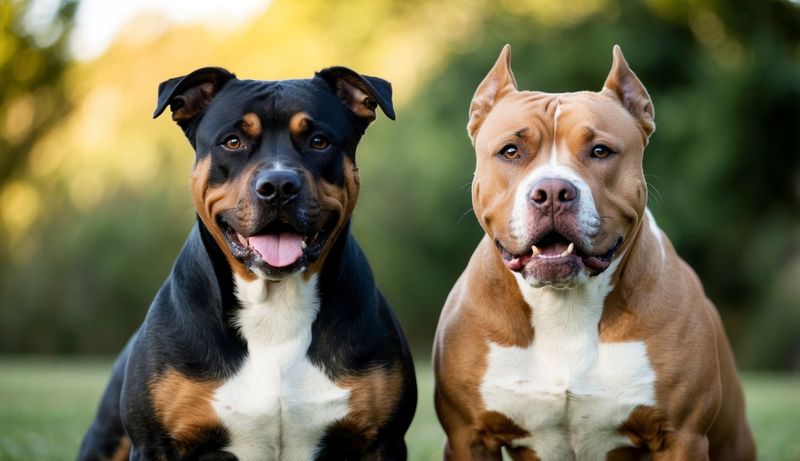
Both breeds boast a strong, muscular build, but American Staffordshire Terriers are typically stockier. They have a wider head and shorter legs compared to the leaner American Pit Bull.
American Pit Bulls tend to have a more athletic physique, with longer legs and a narrower head. This difference is often noticeable when the dogs stand side by side.
The American Staffordshire Terrier’s robust appearance is complemented by a broad chest, whereas Pit Bulls may appear more streamlined. These physical traits can help distinguish the breeds at a glance, though individual dogs may vary.
Temperament and Behavior

American Staffordshire Terriers are known for their friendly and loyal nature, often described as people-oriented dogs. They thrive on human companionship and social interaction, making them great family pets.
On the other hand, American Pit Bulls, while also affectionate, tend to exhibit higher energy levels. They require more exercise and mental stimulation to remain content.
Both breeds are intelligent and eager to please, but their energy needs can influence how they interact with their families. Understanding these differences can aid in choosing the breed that fits your lifestyle best.
Training Needs
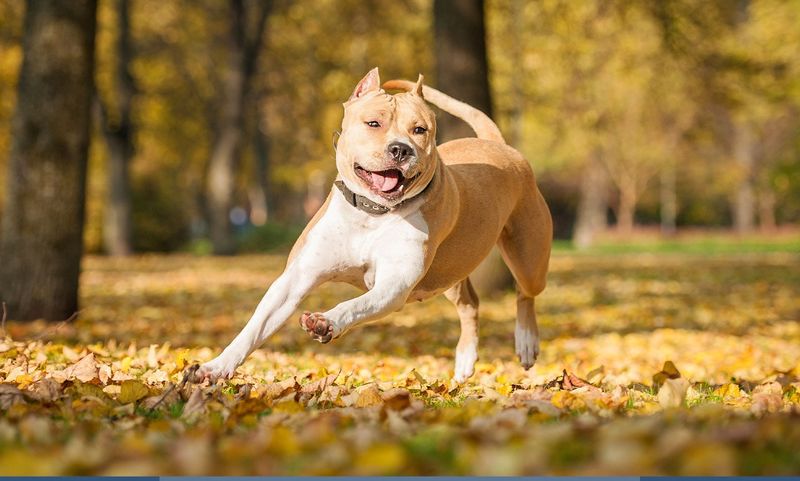
Training both breeds requires patience and consistency. American Staffordshire Terriers, with their eagerness to please, often respond well to positive reinforcement methods like treats and praise.
They may require less repetition to learn commands compared to American Pit Bulls. Pit Bulls, with their high energy, need engaging and varied training sessions to prevent boredom. Incorporating play and mental challenges into their routine can enhance their learning experience.
Both breeds benefit from early socialization to become well-adjusted adults. Tailoring training methods to each breed’s unique temperament can lead to successful behavior management.
Exercise Requirements

Both breeds are active and require regular exercise to maintain their physical and mental health. American Pit Bulls, with their higher energy levels, may need more vigorous activity, such as running or agility training.
American Staffordshire Terriers, while still energetic, may be satisfied with daily walks and playtime. Providing ample opportunities for exercise can prevent behavioral issues related to boredom.
Engaging activities like fetch or tug-of-war can be beneficial for both breeds. Understanding their exercise needs helps ensure they remain happy and healthy companions, with the American Pit Bull requiring a bit more activity.
Grooming and Maintenance

Both breeds have short, sleek coats that require minimal grooming. Regular brushing helps remove loose hairs and keeps their coat shiny.
American Staffordshire Terriers may experience seasonal shedding, while American Pit Bulls can have more consistent shedding throughout the year. Bathing should be done as needed to maintain coat health. Checking their skin for irritations or allergies is essential, as both breeds can be prone to skin issues.
Keeping their nails trimmed and ears clean also forms a part of their grooming routine. Simple maintenance ensures their comfort and keeps them looking their best.
Health and Lifespan

Both breeds are generally healthy but can be prone to specific genetic conditions. American Staffordshire Terriers may suffer from hip dysplasia and heart disease, while American Pit Bulls might face allergies and thyroid issues.
Regular veterinary check-ups are crucial for early detection and management of these conditions. Both breeds have a lifespan of around 12 to 16 years, with proper care and diet playing significant roles in their longevity.
Understanding potential health concerns enables owners to provide preventive care. Ensuring they have a balanced diet and regular exercise contributes to a healthy, long life.
Breed History
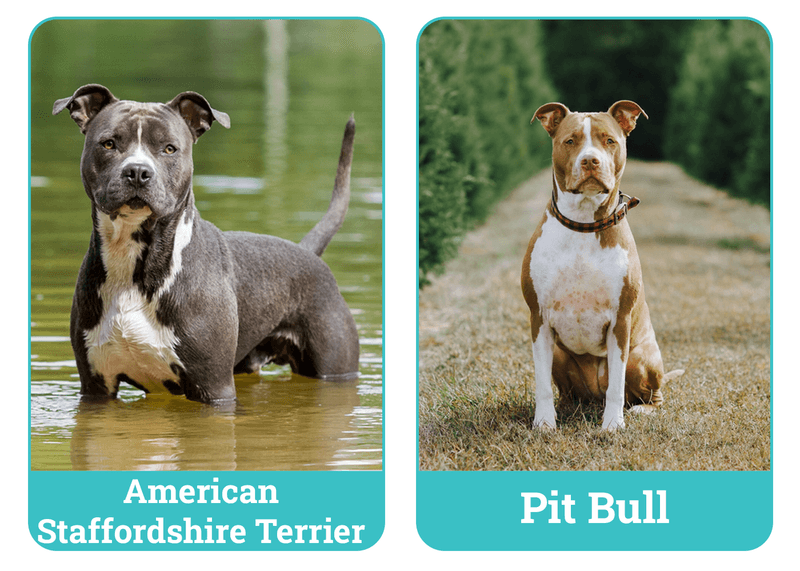
Both breeds share a controversial history rooted in bull-baiting and dog fighting. Over time, American Staffordshire Terriers were bred for companionship and show, while American Pit Bulls retained more of their fighting lineage.
This distinction led to different breed standards and purposes. Staffordshire Terriers were recognized by the American Kennel Club as a distinct breed, emphasizing traits suited for family life.
In contrast, Pit Bulls’ history contributed to their reputation, often misunderstood due to their past. Understanding their history is vital for appreciating the breeds’ evolution and current roles in society.
Recognition and Classification
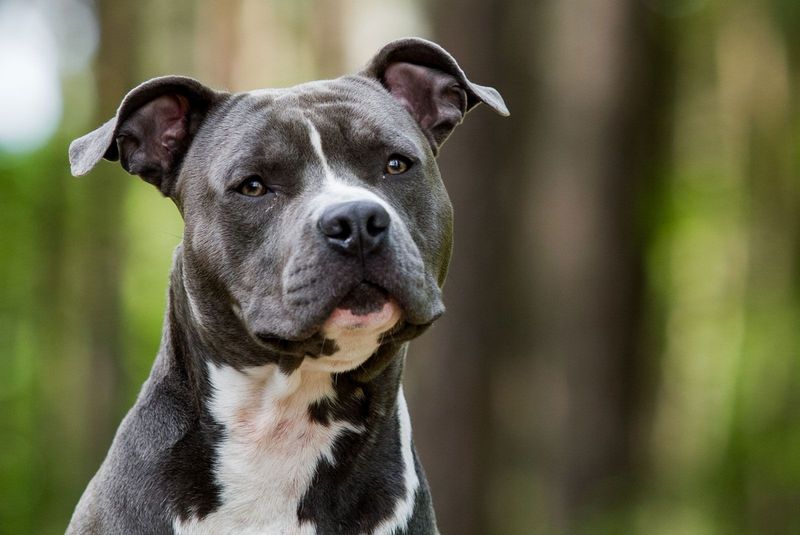
American Staffordshire Terriers are recognized by major kennel clubs, including the American Kennel Club (AKC), while American Pit Bulls are not. Instead, Pit Bulls are recognized by organizations like the United Kennel Club (UKC).
This distinction affects their participation in breed-specific dog shows and events. The lack of AKC recognition for Pit Bulls influences public perception and legal regulations related to the breed.
Understanding these classification differences can impact ownership and participation in canine activities. For potential owners, these distinctions may influence the choice based on desired activities and community regulations.
Legal Restrictions
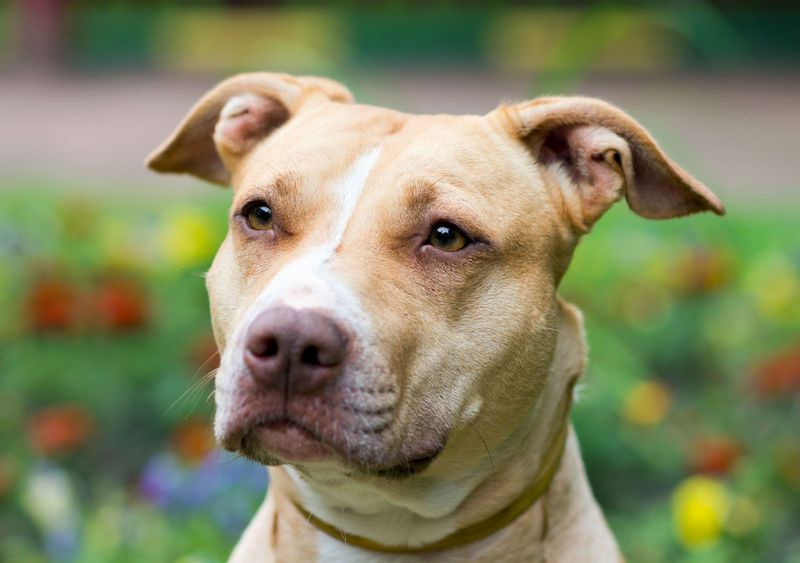
Breed-specific legislation (BSL) often affects American Pit Bulls more severely than American Staffordshire Terriers. Many regions impose restrictions or bans on owning Pit Bulls due to safety concerns, stemming from their fighting history.
These laws can impact housing, insurance, and travel opportunities for Pit Bull owners. American Staffordshire Terriers, while occasionally affected, generally face fewer legal challenges.
Understanding local laws is crucial for potential owners to avoid legal complications. Advocacy for fair treatment and education about responsible ownership plays a role in changing perceptions and potentially easing restrictions on these breeds.
Social Perception
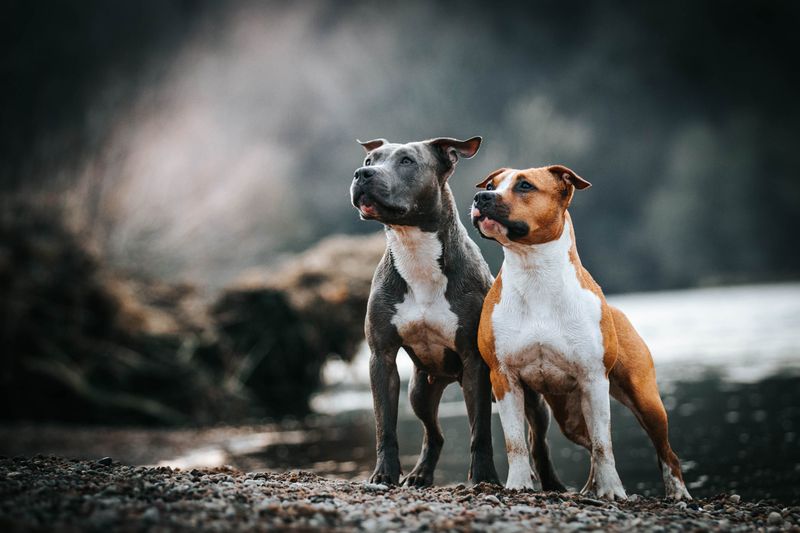
Public perception of these breeds often differs significantly. American Staffordshire Terriers are typically viewed as more family-friendly due to their kennel club recognition and portrayal as companion animals.
American Pit Bulls, however, face stereotypes of aggression, largely due to their historical use in fighting. These perceptions influence adoption rates, with Pit Bulls often spending more time in shelters.
Educating communities about the true nature of these dogs can improve their image and reduce stigma. Promoting responsible ownership and showcasing positive stories help shift societal views, creating more opportunities for both breeds.
Popularity and Ownership Trends
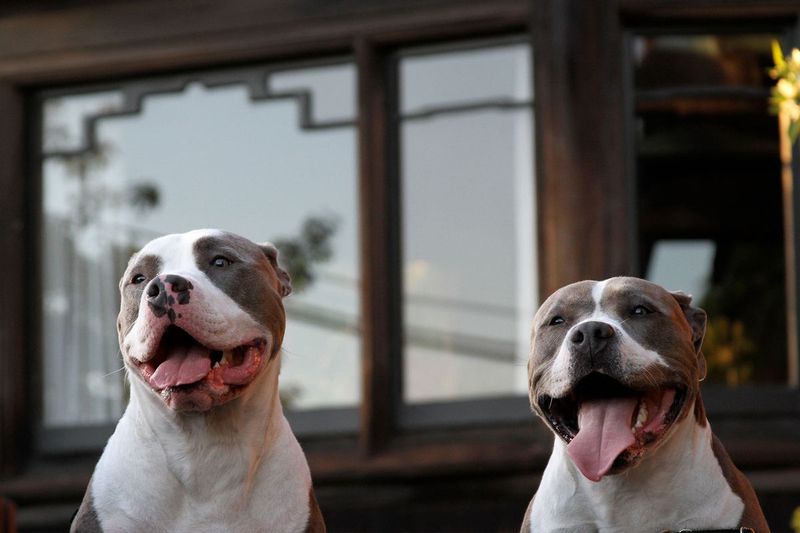
American Staffordshire Terriers and American Pit Bulls have seen varying popularity trends. Staffordshire Terriers, with their family-friendly image, often enjoy steady popularity among pet owners.
Pit Bulls, despite facing legal challenges and stereotypes, have passionate advocates who promote adoption and responsible ownership. Their popularity can vary widely based on regional laws and media portrayal.
Understanding trends can help potential owners make informed decisions about adopting one of these breeds. Popularity influences availability in shelters and rescues, with Pit Bulls often more prevalent due to overbreeding and abandonment issues.
Compatibility with Children
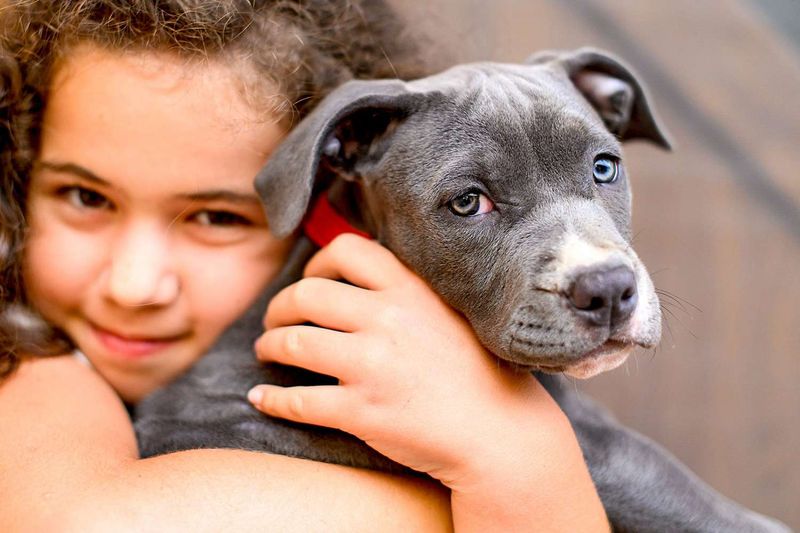
Both breeds can be excellent companions for families with children, but supervision is always recommended. American Staffordshire Terriers are known for their patience and gentleness with kids, often forming strong bonds with young family members.
American Pit Bulls, with proper training and socialization, can also thrive in a family setting. Their playful and affectionate nature makes them suitable for active households.
Teaching children how to interact respectfully with dogs ensures a harmonious relationship. Understanding each breed’s temperament and needs can lead to a successful integration into family life, benefiting both children and pets.
Adaptability to Different Environments
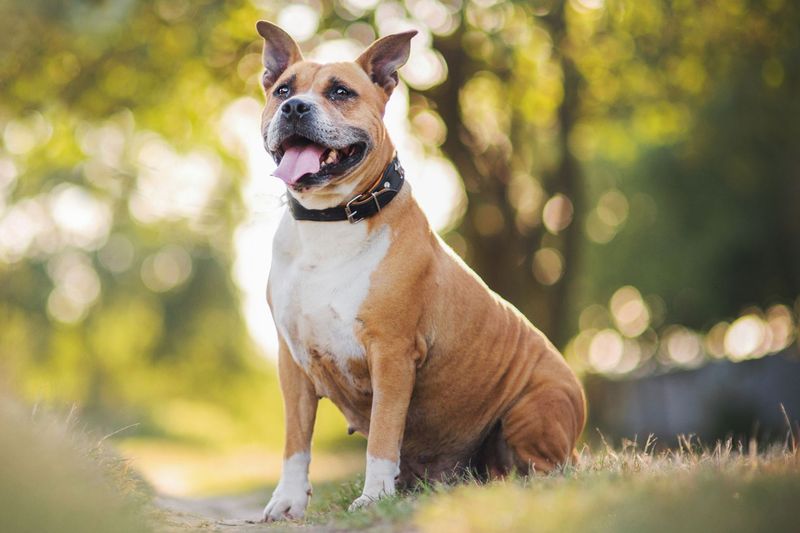
Both breeds are adaptable but have different needs based on their environment. American Staffordshire Terriers can adjust well to apartment living with sufficient exercise and mental stimulation.
American Pit Bulls, with their higher energy levels, may benefit more from a suburban or rural setting where they can run and play freely. Both breeds require a secure environment to thrive, preventing them from wandering or getting into trouble.
Adequate training and socialization further enhance their adaptability to various living situations. Understanding these needs ensures a happy and well-adjusted pet, regardless of the environment.
Dietary Considerations

A balanced diet is crucial for both breeds, supporting their health and energy levels. American Staffordshire Terriers may require a diet rich in proteins and healthy fats to maintain their muscular build.
American Pit Bulls, with their active lifestyle, benefit from a diet that supports joint health and energy needs, emphasizing quality ingredients. Monitoring their weight and adjusting portions helps prevent obesity-related issues.
Both breeds may have food allergies, so selecting appropriate food is essential. Consulting a veterinarian ensures their dietary needs are met, contributing to overall well-being and longevity.

